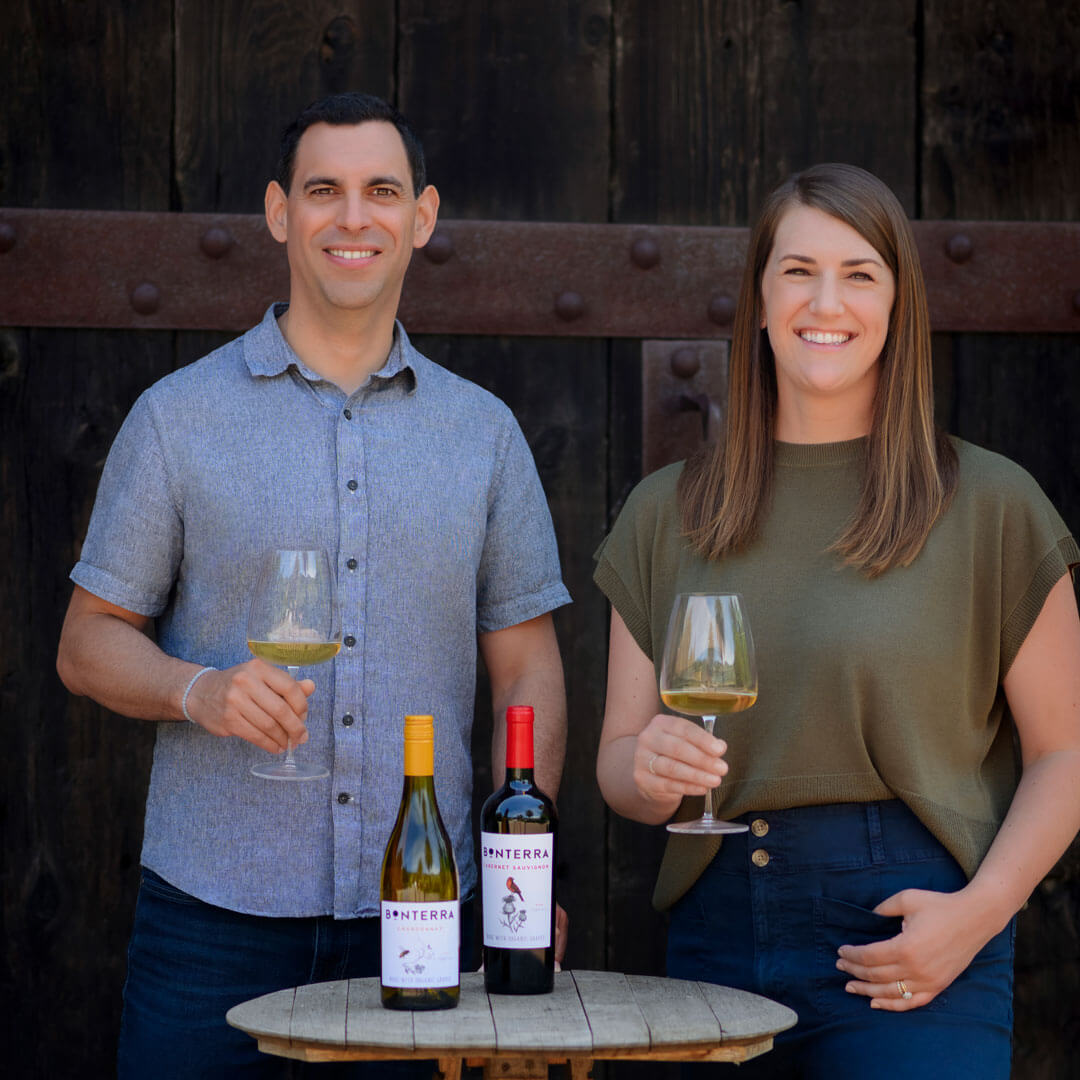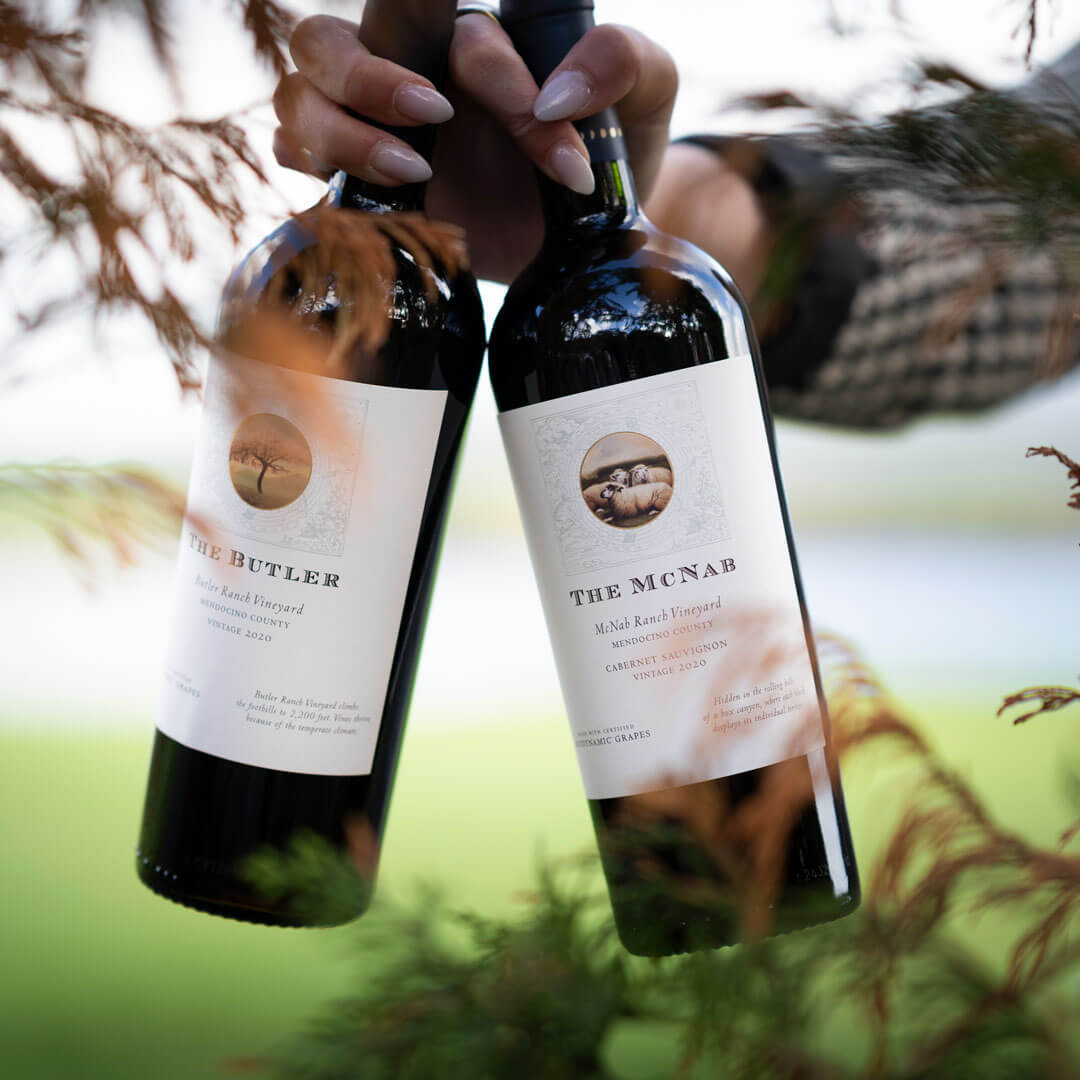Welcome to the delightful world of rosé wine! This unique style of wine has exploded in popularity over the years and shows no signs of slowing down, having captured the hearts and palates of wine drinkers around the globe. Today we will explore the characteristics, types, and production of rosé wine, with a special emphasis on the importance of sustainability.
At Bonterra Organic Estates, we believe that quality and sustainability go hand in hand. Our commitment to organic practices ensures that every sip of our rosé is not only delicious but good for the earth.
What is Rosé Wine, and What Makes it Unique?
Rosé wine is a delightful category that stands apart from both red and white wines. Unlike red wines, where the grape skins are left in contact with the juice for an extended period (which is what makes the wine red!), or white wines, where the grape skins are quickly separated, rosé wine strikes a delicate balance between the two, balancing the best of both worlds.
The production of rosé wine begins by allowing the grape skins to have brief contact with the juice, typically for a few hours to a couple of days. This limited skin contact imparts the beautiful pink hue that is synonymous with rosé. The longer the skin contact, the deeper the color of the resulting wine.
Grape variety, harvest timing, and climate also play crucial roles in the production of rosé. Different grape varietals, such as Grenache, Syrah, and Pinot Noir, contribute to the diverse range of flavors found in rosé wines.
Harvest timing is carefully chosen to ensure optimal ripeness and acidity, leading to a balanced and vibrant wine. The climate in which the grapes are grown influences the flavor profile, with cooler climates often producing rosé wines with higher acidity and delicate fruit notes.
Organic practices, such as those employed at Bonterra Organic Estates, America’s largest organic winery, further enhance the quality and taste of rosé wines. By avoiding harmful synthetic inputs and embracing organic farming, we create an environment where the grapes can thrive naturally, resulting in wines that showcase the true expression of the vineyard and the land.
The Production Process of Rosé Wine
Rosé wine can be produced using various methods, each with its own unique impact on the flavor profile.
- Maceration Method: Maceration, or contact, is the most common method for producing rosé wine. It involves keeping the grape skins in contact with the juice for a short period of time, typically a few hours to a couple of days. The longer the maceration, the deeper the color and more pronounced the flavors. After maceration, the juice is separated from the skins and fermented to create the final rosé wine. This method allows winemakers to carefully control the color and flavor, so they can craft the wine exactly to their liking. This results in a wide range of styles and intensities.
- Saignée Method: Saignée, meaning “bleeding” in French, involves running off a portion of juice from red wine production. This process is used to concentrate the flavors and tannins in the remaining red wine. The juice that is bled off is then fermented separately to create rosé wine. Saignée method rosés often exhibit deeper color and more concentrated flavors due to the initial contact with the grape skins during red wine production.
- Blending: In some cases, winemakers may create rosé wine by blending red and white wines together. While this method is less common, it allows for precise control over the desired color and flavor profile of the final wine. However, it’s important to note that in many regions, including some in Europe, blending red and white wines to create rosé is not allowed.
Grape Varieties and Taste Profiles
Rosé wines can be crafted from a wide range of grape varieties, each contributing to the wine’s unique taste, color, and aroma. Popular grape varietals used in rosé production include Grenache, Syrah, Mourvèdre, Pinot Noir, Cinsault, and Sangiovese.
Grenache-based rosés often exhibit vibrant red fruit flavors and refreshing acidity. Syrah-based rosés tend to be more full-bodied with darker fruit characteristics and hints of spice. Pinot Noir-based rosés offer delicate red fruit flavors and a silky texture. The choice of grape variety greatly influences the taste profile of the rosé, allowing for a diverse range of flavors to cater to different palates.
From bone-dry to slightly sweet, rosé wines offer a spectrum of taste profiles. Dry rosé wines, with minimal residual sugar, showcase crisp acidity and a refreshing finish. Off-dry or slightly sweet rosé wines provide a touch of sweetness, balancing the acidity and offering a more rounded mouthfeel.
Serving Rosé: Tips and Pairings
To fully enjoy the flavors of rosé wine, it’s essential to serve it at the right temperature and in suitable glassware. Here are some wine tasting tips to enhance your rosé experience:
- Temperature: Serve rosé wine chilled but not overly cold. A temperature range of 45-55°F (7-13°C) is ideal, as it allows the wine’s aromas and flavors to shine without being masked by excessive coldness.
- Glassware: Choose a glass with a tulip or flared shape, as it helps concentrate the aromas and directs them toward your nose. A medium-sized wine glass with a narrow rim works well for rosé, allowing you to appreciate its delicate nuances.
When it comes to pairing rosé with food, its diverse flavor profiles offer a wide range of options. Here are some pairing recommendations:
- Light and Crisp Rosé: Pair with fresh salads, grilled vegetables, seafood, or light cheeses. The bright acidity and refreshing character of the wine complement these dishes perfectly.
- Fruity and Aromatic Rosé: Try pairing with spicy cuisine, such as Thai or Indian dishes. The fruit-forward flavors of the wine can balance the heat and spice, creating a harmonious pairing.
- Rich and Full-Bodied Rosé: Match with heartier dishes like grilled meats, roasted poultry, or flavorful vegetarian dishes. The fuller body and complex flavors of the wine can stand up to bolder flavors.
Remember, personal preferences play a significant role in wine and food pairings, so feel free to experiment and discover your own favorite combinations, whether it’s with a savory meat dish or a chocolate and wine pairing. For more, check out our blog post all about wine tasting tips and tricks!
Rosé Wine in the Context of Sustainability
The popularity of rosé wine aligns with the growing demand for sustainably produced beverages. At Bonterra Organic Estates, we are proud to be at the forefront of sustainable winemaking. Our commitment to organic practices has earned us certifications like CCOF, B Corp, and TRUE Zero Waste, reflecting our dedication to minimizing our environmental impact and emphasizing our commitment to business for good.
These sustainability efforts not only benefit the planet but also improve the quality of our wines. By embracing organic farming, we ensure that our grapes are nurtured in a balanced and healthy environment, resulting in wines that showcase the true expression of the vineyard. The care and attention given to our vineyards translate into exceptional flavor and quality in each bottle of Bonterra wine.
Rosé wine is a unique and vibrant category that continues to captivate wine drinkers around the world. Its diverse flavor profiles and versatility make it a delightful choice for any occasion. By embracing sustainable production methods, such as those practiced at Bonterra Organic Estates, we can enjoy rosé wine while contributing to a healthier planet. Explore our wine online today, and for an even more curated experience, consider joining our wine club to enjoy exclusive access to premium wines, member benefits, and personalized selections tailored to your preferences.




